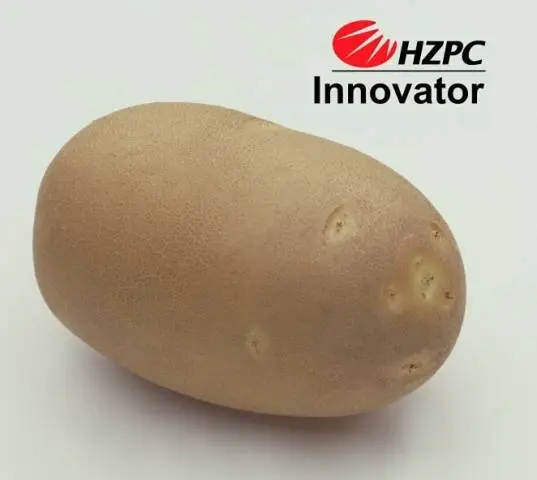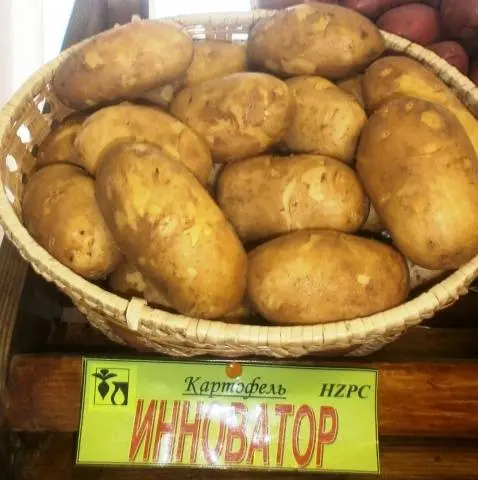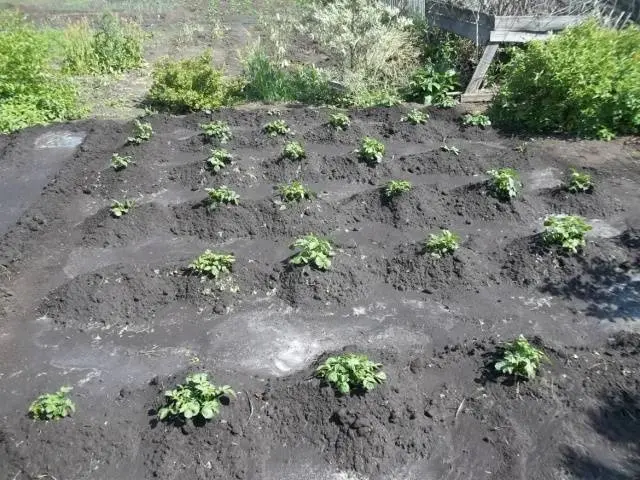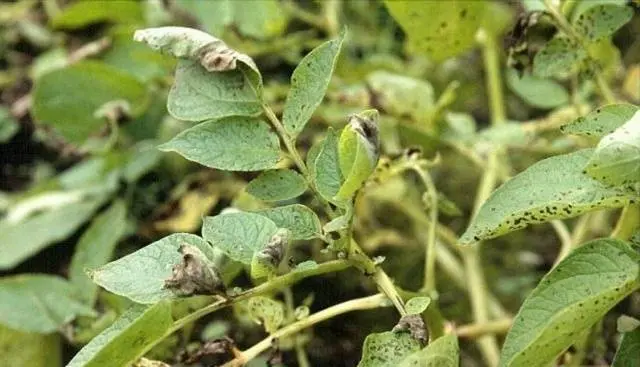Contents
High-yielding and unpretentious table potatoes Innovator has been on the market for more than ten years. Due to the resistance of the plant to weather conditions, it has spread to many regions.

History of origin
Variety Innovator is a product of the work of the Dutch breeders of the company HZPC Holland BV. In Our Country, a new potato variety intended for commercial production has been grown since 2005, when it entered the State Register. Recommended for all central and Volga regions, i.е. climatic conditions of the middle zone of the country. But gained popularity in Siberia and the southern steppe regions. Now many farms are included in the State Register as domestic originators of seed material of the Innovator variety: from the Moscow region, Tyumen, Sverdlovsk regions, Stavropol Territory, Tatarstan.
Description and characteristics
Stable yields have made medium-early Innovator potatoes popular among industrial crop growers. Collection begins after 75-85 days of plant development. From a hectare they receive 320-330 centners. The maximum yield of the Innovator variety was obtained in the Kirov region: 344 q/ha. On personal plots from 1 m2 you can collect potatoes from 15 to 30 kg. The marketability of the crop is from 82 to 96%, there are few small tubers.
Potato bush Innovator develops up to 60-70 cm in height. Semi-erect, sprawling stems grow quickly, medium foliage. Large leaves slightly wavy, light green. Lots of white, large flowers. Berries are rare.
Tubers of the variety Innovator are oval, oblong, covered with a light yellow rough skin, with small, flat eyes. From 6 to 11 large, uniform potatoes are formed in the nest, weighing from 83 to 147 g. The light-cream pulp of the Innovator potato is dense, slightly boiled soft, after cooking or freezing it retains a pleasant color. Contains 12-15% starch, 21,3% dry matter. The tasting score is 3 and 4 points.
Variety Innovator, due to its dense structure, has established itself as one of the best for making salads, french fries, baking in foil, frying or stewing. The tubers are used to make chips and puree powder.
The keeping quality of the variety reaches 95%, with an average dormant period. Potato Innovator tolerates mechanical damage, suitable for long-distance transportation, stored for 3-4 months, which is a good indicator for an early variety.
Planting varieties Innovator are resistant to typical diseases: pale potato nematode, potato cancer. But the golden potato cyst nematode parasitizes the plant. Innovator demonstrates medium resistance to late blight and scab. The variety is susceptible to fungal disease rhizoctoniosis and attacks of the Colorado potato beetle.

Advantages and disadvantages

Landing
According to potato growers, any soil is suitable for the Innovator variety, although it works best on fertile sandy loamy soils with a neutral or slightly acidic reaction. In such areas, water does not stagnate, and oxygen easily penetrates to the tubers. Heavy clay soils need structuring, adding sawdust or sand per 1 m in a bucket2. The acidity is reduced by adding 500 g of lime or 200 g of dolomite flour. In the spring, a glass of wood ash is placed in the holes. The soil is prepared and fertilized with humus, compost, superphosphate during autumn plowing.
Under the conditions of the middle climatic zone, Innovator potatoes are planted in May, when the soil temperature rises to 7°C. A month and a half before planting, seed potatoes are taken out of storage, sorted and germinated.
- Lay out the tubers in 2-3 layers;
- The temperature in the room is not higher than 17°С;
- Before planting, tubers without seedlings are rejected and treated with growth stimulants according to the instructions;
- The tubers are also sprayed with special directional preplant insecticides against the Colorado potato beetle;
- The layout of nests for the potato variety Innovator: 70 x 25-40 cm. Small tubers are planted more densely, and large ones less often.
Care
A plot with potatoes of the Innovator variety is regularly loosened, removing weeds. If necessary, the beds are watered if the weather is hot. For potatoes, watering in the bud phase and after flowering is important.
Hilling and top dressing
After rains or watering, hilling is carried out, at least three times, having managed to form high ridges before the flowering of the Innovator potato. They are fed by watering mullein (1:10) or bird droppings (1:15) in the aisle. These fertilizers are also commercially available. Before the first hilling under the root of the Innovator variety, pour 500 ml of a solution of 20 g of urea or ammonium nitrate in 10 liters of water.

Diseases and pests
| Disease/Pests | Evidence | Control measures |
| Fitoftoroz | Brown spots on leaves. Bottom white coating | Hilling potatoes until the leaves close in the bush. Spraying with copper sulfate 15 days after germination |
| Risectoniasis | Infection could take place through the planting of tubers with black rough spots. Black rotting spots on the bottom of the stems, white bloom on the leaves | Spraying tubers before planting with boric acid – 1% solution or fungicide Ditan M-45 (80%) |
| Poroshistaya parsha | White growths are noticeable on the stems, which eventually turn brown and shred | Before laying, the tubers are treated with a 5% solution of copper sulphate |
| Golden potato cyst nematode | Small microscopic worms live on the roots. During flowering, the plant turns yellow, the lower leaves fall off. Roots become fibrous. The nematode persists as a cyst and spreads easily, remains viable for up to 10 years | The tops and all plant residues are burned. Potatoes are planted on the plot after 4 years |

Harvesting
Before harvesting potatoes of the Innovator variety, you need to make sure that a thick skin has already formed on the tubers. Harvested in the phase of technical maturity, potatoes will be better stored.
Conclusion
The table variety deserves more attention from large farms and homeowners. Resistance to a number of diseases makes it easy to grow. High marketability, productivity and keeping quality provide attractiveness.









